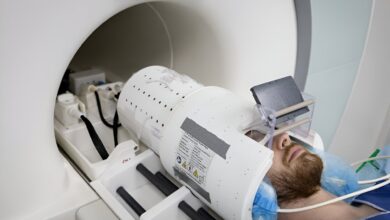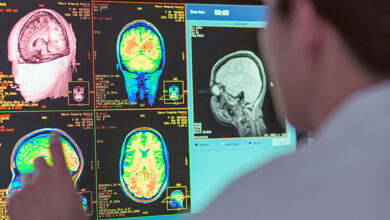Associate Professor Nicholas Opie holding the device, Stentrode. Photo, Video Credit: University of Melbourne
HealthTechnology AustraliaParalyzed Patients Write Text Messages With Their Eyes After Wireless Implant
A small device can wirelessly restore the transmission of brain impulses of paralyzed patients, allowing them to complete tasks such as texting, shopping, and online banking.
“We are excited to report that we have delivered a fully implantable, take home, wireless technology that does not require open brain surgery, which functions to restore freedoms for people with severe disability,” says Associate Professor Thomas Oxley, neurointerventionalist and CEO of industrial research partner Synchron which produces Stentrode, the minimally-invasive brain-computer interface.
Professor Peter Mitchell, Neurointervention Service Director at the Royal Melbourne Hospital and principal investigator on the trial, implanted the device in two participants through their blood vessels, next to the brain’s motor cortex, in a procedure involving a small “keyhole” incision in the neck. “In both cases, the surgery has gone better than we had hoped.” The two patients used Stentrode to control the computer-based operating system with an eye-tracker for cursor navigation. They were able to achieve an average click accuracy of 92% and 93% respectively.



